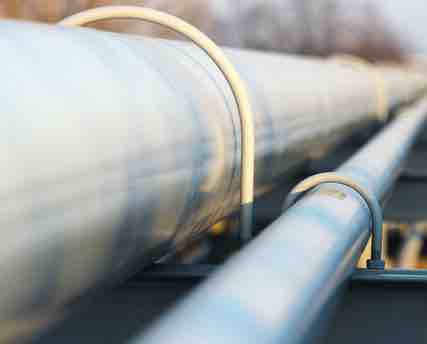Oil Pipelines In Louisiana May Soon Be Buried At Sea

Louisiana’s shrinking coastline is causing headaches for the oil industry in that state, as an eroding coast and rising sea waters are threatening oil infrastructure.
The coastline is disappearing at a rate of approximately 20 square miles per year, which could mean that more than 610 miles of pipeline could be exposed over a period of 25 years. The loss of the coastline and the swamps and islands along the gulf also increase the risk of flooding further inland.
So far, from 1932 to 2010, Louisiana has lost approximately 1,880 square miles of land due to the eroding coastline. And while that seems slow, that’s more than four times the size of Hong Kong, and roughly equivalent to the entire land mass within the state of Delaware.
The state has plans to address the issue, but currently finds itself facing a $2 billion deficit, which means that energy companies could foot the bill for any environmental projects. However, according to America’s Wetlands Foundation and Entergy Corporation, oil and gas companies operating along Louisiana’s Gulf Coast already deal with an average loss of $14 billion per year from threats to the environment. By the year 2030, the cost could be over $350 billion.
Kai Midboe, director of policy research at the Water Institute of the Gulf is at the front of the effort to convince the energy industry to make investments in restoring the coastlines. According to Midboe, public funding for the effort will not come close to covering the costs. He is proposing a taskforce that would identify projects for restoration that would protect infrastructure and other assets. The companies would pay dues, which would cover operational costs, and they would share the construction costs for projects that would benefit them.
An example of such a partnership can be found in the effort between America’s Wetlands Foundation and ConocoPhillips, ChevronCorp, and CITGO Petroleum Corp, who are working together on the construction of a $1 million project that is expected to mitigate erosion on the Gulf Intracoastal Waterway.
ConocoPhillips spokeswoman Andrea Urbanek said that a combination of public and private money was used to pay for 77 restoration projects, which enhanced 177,000 acres of wetlands owned by ConocoPhillips, the largest private wetlands owner in Louisiana.
Other measures to improve resiliency of the coastline are being undertaken with funds received from BP Plc and others from the Deepwater Horizon event.
Related News
Related News

- Keystone Oil Pipeline Resumes Operations After Temporary Shutdown
- U.S. House Passes Bill to Reverse Biden's LNG Pause
- Biden Administration Buys Oil for Emergency Reserve Above Target Price
- Enbridge to Invest $500 Million in Pipeline Assets, Including Expansion of 850-Mile Gray Oak Pipeline
- Williams Delays Louisiana Pipeline Project Amid Dispute with Competitor Energy Transfer
- Evacuation Technologies to Reduce Methane Releases During Pigging
- U.S. Regulators Approve Mexico Pacific LNG's Saguaro Connector Pipeline
- Editor’s Notebook: Nord Stream’s $20 Billion Question
- Enbridge Receives Approval to Begin Service on Louisiana Venice Gas Pipeline Project
- Russian LNG Unfazed By U.S. Sanctions




Comments